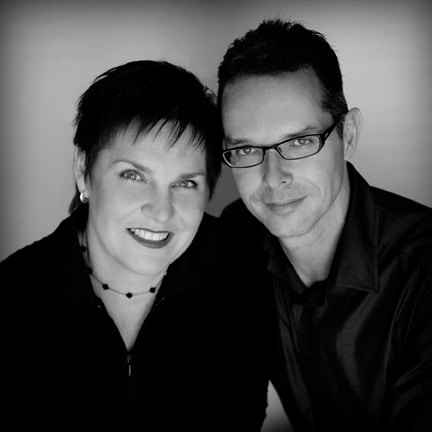
-
Audio of the article “Spirit Guides Within the System of Reiki” by Bronwen Stiene
Download
You may at some point have heard a story that related spirit guides with the system of Reiki.
Many indigenous cultures have worked with spirit guides, not necessarily using this exact terminology. A spirit guide is the spiritual energy of a being that does not have a physical form. To comprehend this concept, spirit guides become humanised by people into shapes, images, or characters not unlike themselves or at least into something they are familiar with. A spirit guide is often thought to be the spirit of someone who once lived in this world or the spirit of an animal, a natural element or some being from another realm. The word ‘guide’ is the clincher in the understanding of what a spirit guide is; it is not just any spirit, but a spirit that guides and advises.
The indigenous cultures that communicate with these spirits have specific rites or rituals attached to the process. Shamanism (thought to predate religion), and animistic rituals, often include the practice of communing with the spirit world. These practices are generally performed by an individual qualified to do so. To qualify as a Shaman, the person would traditionally have had to inherit the position from an acknowledged Shaman and be trained by that person or by directly gaining Shamanic knowledge through triumphing over great obstacles. These two methods ensured that the shaman had the background to deal with the weighty responsibility of being an earthbound and spiritual go-between.
The history of the system of Reiki does not appear to point towards the use of spirit guides. Yet, as Reiki is a Japanese system, it is still interesting to look at the place of spirit guides within that culture.
In Japan, the gaining of ascetic powers (some of which are clairvoyant in nature) is a traditional practice. The powers are developed using extreme practices that most people today would not consider practicable. Fasting and cold water are common methods used to gain the clarity and concentration required to be able to develop clairvoyance.
In The Catalpa Bow, by Carmen Blacker, one Japanese clairvoyant, Mrs Kataoka, is reported to have fasted for a week each spring and autumn as well as performing the Great Cold. The Great Cold is where ten three-gallon tubs of icy water are poured over her head and shoulders three times a day with the aim of developing and sustaining her clairvoyant abilities. Once again, the extremity of the practices ensures that the clairvoyant has a commitment to, and profound understanding of, ascetic powers.
The indigenous Japanese culture strongly features Kami, Divine Spirits, with Kami being an important aspect of Shintoism. These Divine Spirits inhabit the natural world and may include the spirits of natural elements such as water, rock and earth and qualities such as fertility. These ancient Japanese interpretations of the world still play a major role in contemporary Japanese culture. To communicate with a Kami, you are required to become a Kami. It is only once you enter that experience, that you can communicate with other Kami. The fundamental belief is that you are, in fact, already a Kami, as everyone has this potential within them. However to reach that potential you must first endure trials of great austerity in your lifetime.
Usui Mikao, the founder of Reiki, is believed to have created the system out of his personal experiences which included aspects of Shintoism. However the Japanese Reiki techniques that have been passed down contain no direct techniques to teach one to work with Kami or spirit guides. In techniques such as byosen ho and reiji ho the Reiki practitioner is called upon to develop intuitive abilities within herself. Intuition is an internal process that develops overtime and, if nurtured correctly, it can become an open doorway to connecting with your inner wisdom. A strong commitment to practice and overcoming obstacles is yet again requested of the practitioner. Through this practice you will acquire an understanding of the difference between truthful intuition and the world of make-believe.
Today you will find some Reiki schools working with spirit guides, even giving them the title Reiki Guides. This concept did not originate within the system of Reiki, it was developed in some Reiki teachings from the 1980s and 90s out of a New Age interest in spirit guides.
How often have you felt like you could do with some decent guidance? Would once a day be often enough? What a joy it would be to reach out to a spirit guide and be told “Do not worry, all will be well.” We’d probably be living quite different lives if that were told us on a personal level each day and we took it to heart and acted upon it.
So, it sounds like a great idea to have a spirit guide, in fact many people talk about spirit guides as if they were their very, own personal pet beings “My spirit guide told me…”. But what do we really know about the spirit world?
There are some points that practitioners who desire to work with spirit guides need to keep at the forefront of their minds.
If, as we’ve discussed in previous articles, the ultimate aim of the system of Reiki is to become One with the universe, why are practitioners looking outside of themselves for answers? Surely if you connectwith the world at a deep energetic level (becoming One with it), you will no longer need to work with dualistic qualities such as names or characters.
Is it possible to trust what we hope is a spiritual being? When you are meditating and you hear a voice, or you have a particularly strong thought, or you see a face – you may believe you have met your spirit guide. She’s all yours and from what you understand she will help you in every and any possible way that a non-physical being can. So for the next 20 minutes you ask her everything you can think of – should you talk to your son about the influence his current friend is having on him, should you buy the more expensive car or the less expensive one that has the faulty light, which meditation is better for you today? On and on you go, and you tire yourself out with asking questions. Your spirit guide faithfully answers yes, no and sometimes you’re not quite sure but it is all very fascinating.
In the physical world – if you were standing next to someone at a bus stop for 20 minutes would you strike up a such a conversation – would you trust that person with all your deepest darkest questions? Normally it would take you much longer to decide who to trust with these thoughts and it would take you longer still to actually take their advice on such personal issues. Before accepting spiritual guidance from a stranger it is wise to get to know who this being is and to be able to approach your communication with the being with clarity and commonsense.
Chatting to spirit guides is therefore not as simple as you might be lead to expect. Perhaps you should ask yourself, “Are all spirits there to help me?” If you don’t know the answer to this question, are you qualified to be asking a spirit for guidance, or are you placing yourself in a vulnerable position?
One more question that you might like to ponder: If it is so easy to communicate with spirit guides who can answer my important questions, why is that the world is in such a mess? People have been talking to guides, Gods and beings of many shapes and sizes for thousands of years and yet war continues to ravage our world. By looking outside of yourself for answers are you neglecting to take responsibility for your own actions?
You can see why indigenous cultures have always requested that the Shaman or ascetic undergo tests of extraordinary strength and commitment before qualifying for the role of spiritual interpreter. The community is then assured that this go-between is genuine and not a plastic shaman dealing with superficial realities that may end up getting herself or someone else in the community hurt due to a lack of true understanding.
Your motivation for communicating with a spirit guide needs to be constantly reviewed as it can loose its vitality and become an attachment. Some practitioners become so attached to the concept of spirit guides that they question their own actions if they are not ‘guided’ by an outside force. Relying on something outside of yourself does not strengthen your ability, it weakens your self-confidence. If you continue to look for your guide, without an historical context and understanding of what you are doing, you may find yourself imagining a guide instead. This fantasy is a distraction from the path that leads to true realization.
You may feel that a spirit guide has something to impart to you, you can choose to take that information or not, but be sure to use your commonsense. Bring it back through your human filter. Remember that for true healing to occur you need to let go of the need to manipulate and to create healing. To be wholly in this space you will need to be an experienced practitioner who can understand the meaning of Reiki in your own life first. By remaining open, inexpectant and nonjudgemental, you, as the practitioner, will be able to deal with what occurs in your life, moment by moment, and that strength will come from within, not without.
To hone your intuitive skills as a Reiki practitioner it is recommended that you begin practicing with the Japanese Reiki techniques of byosen ho and then reiji ho. This recommendation is made with the belief that you can develop ascetic powers without having to move away from the system of Reiki – it is all there on offer, waiting for you to delve deeper into its origins and practices. This system has grown out of a strong historical background and culture, elements, which if respected, will keep the practitioner in check.
Of course these beginner practices are a part of a whole system so don’t forget your precepts, your meditations, your hand positions and your ongoing development hand-in-hand with a teacher. Your teacher will be able to guide you to choose techniques or practices that follow-on from these basic practices when you are ready. These Reiki techniques of byosen ho and reiji ho can be found in The Reiki Sourcebook and in the newly released Reiki Techniques Card Deck. Perhaps as one strengthens one’s intuitive and inner connection through such practices, and truly commits to them (a great trial in itself sometimes) there may come a point where one recognises the potential of becoming a Kami.
Bronwen and Frans Stiene are the co-founders of the International House of Reiki and co-authors of The Reiki Sourcebook, The Japanese Art of Reiki, Your Reiki Treatment, The A-Z of Reiki Pocketbook and the Reiki Techniques Card Deck. Bronwen and Frans teach in the USA, Europe and Australia. Visit the Courses page to find a course near you.


Comments 4
Well written, well said! Thanks for posting this.
I absolutely loved listening to this. I believe this to be the correct understanding and it definitely resonates with me. Thank you for the clarity you bring to this topic🙏
Thanks Dianne,
Love
Frans
Thank you for writing this article! It makes so much sense.
We always need to keep the non-dualistic nature of reiki in mind.